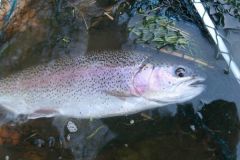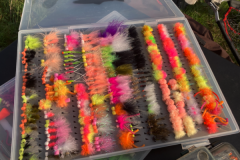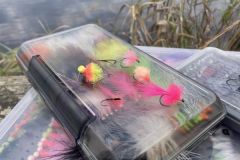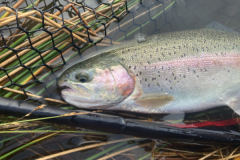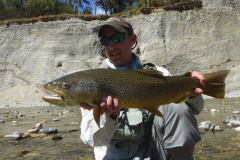What is the cormorant?
This fly is very famous in Great Britain for reservoir fishing and is often used by local competitors. Invented by Graham Pearson, it imitates nothing in particular, and nobody knows what trout think of it? A chiro, an invertebrate, a fry, a tadpole? Whatever the case, they love this fly. A must-have fly for the reservoir. It's often rigged in sizes 10 to 14, mainly with a black marabou wing. Numerous variations exist, with strapping, cheeks, to add a point of attack for the fish or more visibility, but the much more simplistic basic model works wonders.
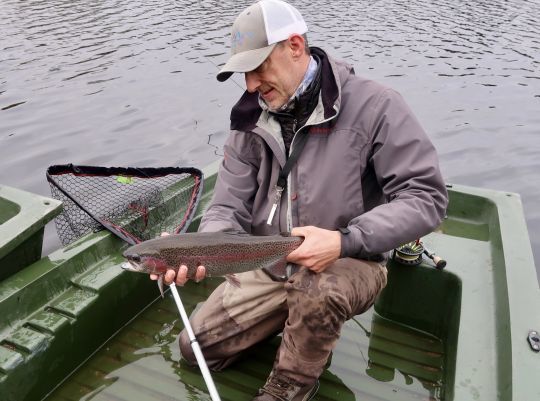
Assembly sheet
- Kamazan B170 hook size 10 or 12
- Mounting silk: UTC 70 Black
- Body: Chartreux flashabou
- Thorax: Spectra dubbing Hends N°46
- Wing: Black Marabou cut to desired length
- Hackle: Black Hen
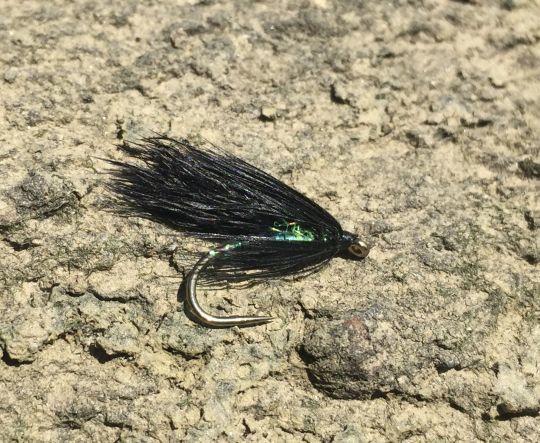
The basic cormorant is fitted with a peacock hearl body, a copper band and a black marabou wing. The body, however, can be produced in a variety of colors, and is often encircled by a shiny band. The wing is mainly black, but can be mounted in white marabout.
You can add goose biot cheeks, a colored head... But it's really its simplicity that makes it so effective.
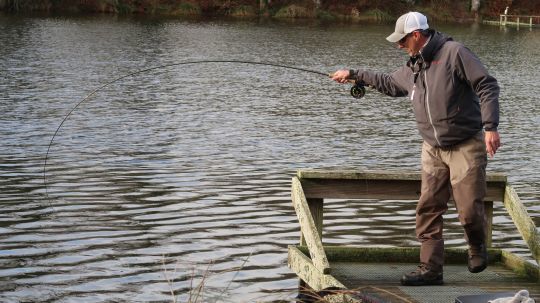
How to use cormorant
It can be used in many ways. It is highly effective and has rapidly become one of the 10 most popular lake flies.
With a plunging line, mounted on a gallows above a blob or booby (or between the two), trout are attracted by the vibrations and disturbances of the blob or booby, but often turn and take the cormorant.
In floating silk, it can be mounted alone or on a train of 2 or 3 slightly different cormorants. Used either statically as a chiro, it can also be knitted (figure 8), but also brought in faster if required.
In intermediate (to plunging) silks above or between attractive "flashy" flies, it can also make a difference.
The cormorant is often caught by trout which, once acclimatized, are wary of bright colors.

 /
/ 


